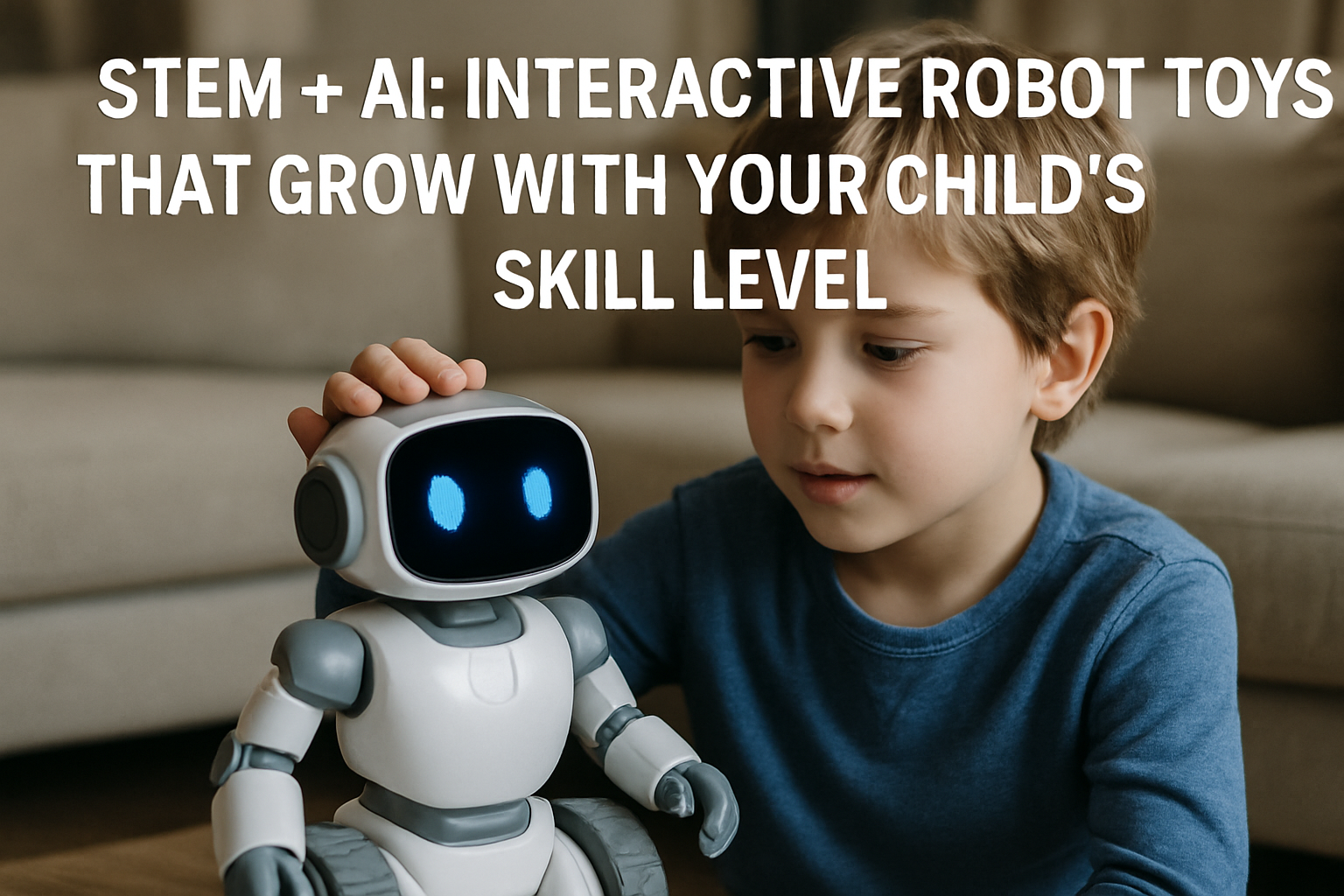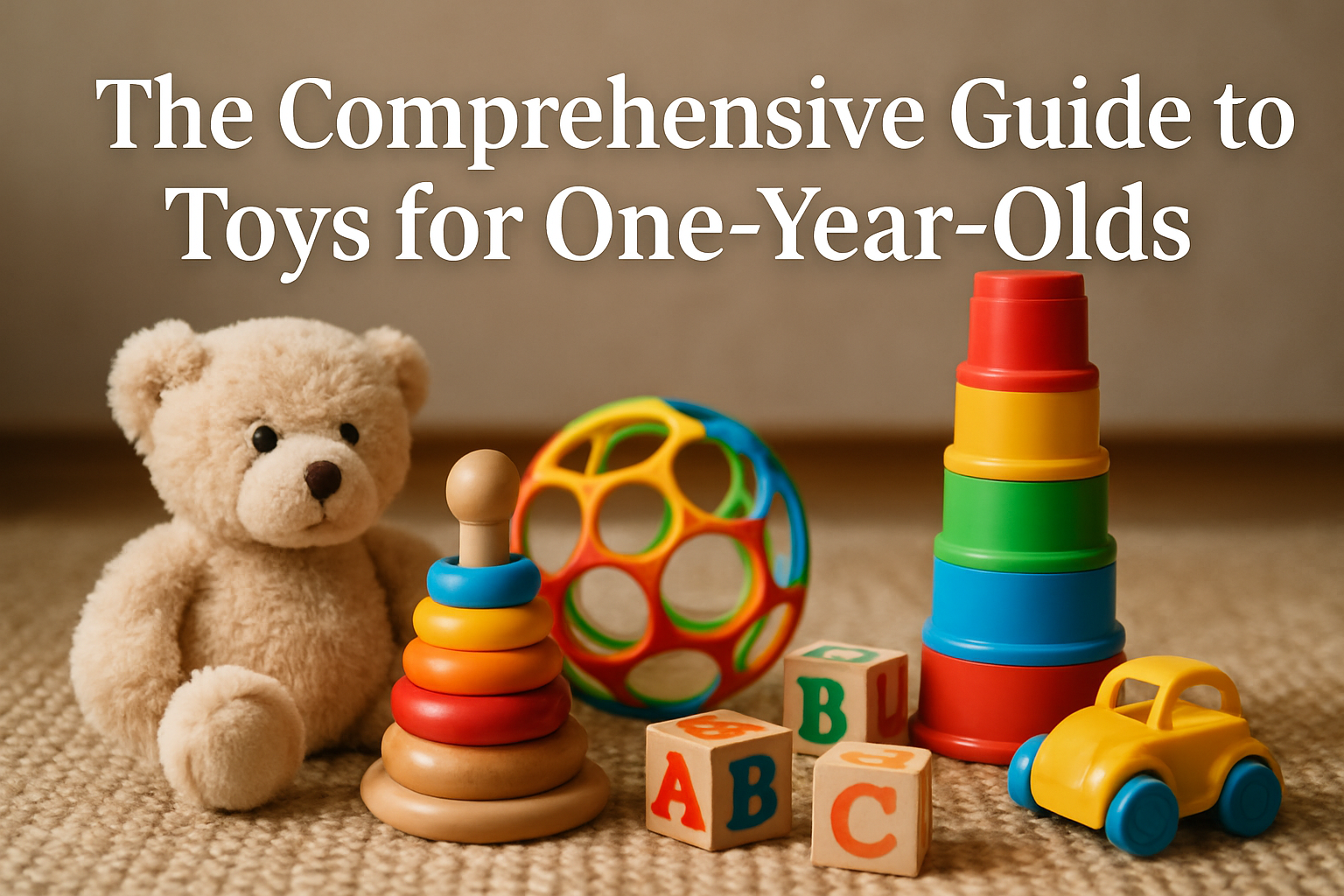The Comprehensive Guide to Toys for One-Year-Olds
Introduction to AI Robot Toys Definition and Overview AI robot toys represe...
Add description, images, menus and links to your mega menu
A column with no settings can be used as a spacer
Link to your collections, sales and even external links
Add up to five columns
Add description, images, menus and links to your mega menu
A column with no settings can be used as a spacer
Link to your collections, sales and even external links
Add up to five columns

AI robot toys represent an innovative breach between playtime and education, providing children with tools that promote learning and development through interactive experiences. The primary purpose of these toys is to engage children in educational activities while they learn essential skills such as coding, problem-solving, and critical thinking. Unlike traditional toys, AI robot toys utilize artificial intelligence to adapt to each child’s learning style and pace, ensuring a unique and personalized educational journey.
Over the years, toy technology has significantly evolved. In the past, toys were merely mechanical and lacked the ability to adapt to the user’s skill level. With the integration of AI technology, these toys can now respond interactively to a child’s actions, enabling them to learn in a more active and engaging way. This evolution signifies a shift from passive play to dynamic learning experiences, where children are not just recipients of information but active participants in their learning processes. AI-powered educational tools are being designed to evolve alongside children, continually offering challenges that match their growing capabilities.
Interactive learning through play is essential for child development. Engaging with AI robot toys allows children to explore concepts in science, technology, engineering, and mathematics (STEM) in a fun and engaging approach. The importance of play cannot be overstated; it lays the groundwork for cognitive and social development. Children interacting with robot toys not only refine their motor skills but also enhance their ability to work collaboratively and communicate effectively with peers. Such activities foster a solid foundation for lifelong learning.
The rise of AI toys is rapidly gaining traction among children and educators alike. Schools and learning environments are increasingly incorporating these interactive toys into their curricula. The popularity of AI robot toys can be attributed to their ability to engage children in learning while aligning with educational standards and goals. Educators recognize that integrating these toys helps develop a range of skills, from fundamental programming knowledge to advanced problem-solving capabilities. Consequently, schools are investing in this technology to enhance their teaching methods and engage students effectively.
Innovations in AI robotics designed specifically for learning are becoming more commonplace. New features such as user-friendly coding applications, adaptive learning algorithms, and interactive storytelling are being introduced to make learning more accessible and enjoyable for children. By personalizing the educational experience, these innovations not only improve engagement but also promote curiosity and exploration. As AI toys become more sophisticated, they can now offer detailed feedback and real-time assessments, assisting educators in monitoring student progress and adjusting instruction accordingly.
Statistics show a notable increase in the adoption rates of educational robotics in classrooms. Feedback from educational institutions indicates that students using AI robot toys demonstrate higher levels of motivation and academic performance compared to those who do not. Many educators report positive experiences when utilizing these toys, noting improvements in classroom dynamics and teaching effectiveness. As the demand for innovative educational tools continues to grow, it is evident that AI robot toys will play a significant role in shaping the future of learning and engagement among young learners.
AI robot toys offer significant benefits for children's cognitive development. One key advantage is their ability to improve problem-solving skills. These toys often present challenges and puzzles that require children to think critically and devise solutions. For instance, when faced with tasks like navigating a robot through an obstacle course, kids must analyze the situation, plan their moves, and adjust their strategies as they learn from their mistakes. This dynamic fosters a mindset geared toward overcoming challenges, which is valuable not only in play but in real-life situations as well.
Moreover, AI robot toys promote critical thinking and creativity. Engaging with these toys encourages children to experiment with various solutions and outcomes, nurturing an innovative approach to challenges. The interactive nature of these toys allows kids to explore different possibilities, which stimulates their imagination. Evidence from studies shows that children who regularly interact with AI-based toys tend to exhibit enhanced creativity, as they are motivated to create and recreate scenarios during play.
Additionally, research indicates that these toys can have a measurable impact on cognitive development. Different studies have shown that children engaged with AI robot toys tend to score higher in tests measuring cognitive skills. These improvements can be attributed to the interplay of engagement and learning stimulated by the toys. The unique blending of education and entertainment results in advanced problem-solving abilities and critical thinking skills, making these toys not just fun, but also instrumental in cognitive growth.
AI robot toys also play a significant role in encouraging social interaction among children. One of their key impacts is on communication skills. When children play with these interactive toys together, they often need to communicate their ideas, discuss strategies, and work collaboratively to achieve shared goals. This interaction helps them refine their ability to express themselves clearly and understand others, which are essential components of effective communication.
Furthermore, AI robot toys facilitate teamwork and collaboration through play. When multiple children engage with the same toy, they learn to cooperate, negotiate, and share ideas, fostering social skills that are vital for successful group dynamics. Activities designed around these toys can encourage children to take on different roles, enhancing their ability to work together and appreciate diverse perspectives. By learning to collaborate in such contexts, they gain experience that extends beyond playtime and into their everyday interactions.
In addition, there are numerous examples of social learning experiences initiated by AI robot toys. Kids might participate in group activities where they code a robot together or compete in team challenges. These scenarios not only provide fun but also create a platform for children to learn valuable social skills organically. Engaging experiences with AI toys enable children to develop friendships and build a sense of community, emphasizing the significance of social bonds formed through shared interests and collaborative play.
When assessing the effectiveness of AI robot toys for educational purposes, it’s crucial to evaluate their pedagogical impact. Research must focus on whether these toys consistently enhance learning outcomes or merely serve as novelty items that capture attention temporarily. This evaluation includes examining the alignment of AI toy functionalities with educational standards and developmental milestones. Educators and parents alike need clear metrics to measure learning efficacy in various settings.
Alongside efficacy, the increasing concerns regarding screen time in children must be considered as well. Many AI robot toys incorporate screens or rely on digital interfaces, which can contribute to excessive screen exposure. Parents worry about the potential long-term effects of screen time, including attention issues and decreased physical activity. Therefore, it is imperative to find a balance that allows children to enjoy the technological benefits of AI robot toys while minimizing the associated risks of prolonged screen exposure.
Finally, significant research gaps still exist in understanding the long-term benefits of AI robot toys in education. Studies have yet to comprehensively cover how these tools affect learning retention over time and their impact on critical thinking and problem-solving skills. As technology evolves, continuous research is necessary to ensure that AI toys remain relevant and effective educational tools. Parents and educators need access to solid evidence to support the integration of AI robot toys into learning environments meaningfully.
One of the standout interactive robot toys is designed with a focus on coding and logical thinking. This toy engages children by allowing them to program it using simple commands, promoting early coding skills. Users frequently praise its intuitive interface, which is engaging for both kids and parents. The positive user feedback highlights its durability and the variety of challenges it presents. Many children find themselves immersed in creating new programs, fostering creativity while developing problem-solving capabilities.
Another popular option is a toy that emphasizes teamwork and collaboration. This interactive robot encourages children to engage with peers by completing tasks together, creating scenarios where they learn the importance of cooperation. User reviews commend its focus on social skills development, as it promotes communication and strategy among children. Additionally, parents report that the robot's engaging storylines captivate children's attention, making learning an enjoyable group activity. The continuous evolution of tasks keeps children coming back, eager to tackle new challenges.
A third toy stands out for its expansive range of learning areas. It covers various subjects such as math, science, and even language skills. The integration of multiple educational elements allows children to experience a well-rounded development tool. Parents have noted positive feedback regarding how adaptable the toy is to different learning styles. Whether a child prefers hands-on activities or immersive stories, this robot accommodates diverse learning preferences. Overall, parents appreciate the toy's ability to grow with their child, ensuring long-term engagement and skill enhancement.
In assessing these options, it's evident that each toy offers unique features catering to different aspects of skill development. While one emphasizes logical thinking and coding, another focuses on collaboration and social interaction. The third option provides a broad educational scope, appealing to various interests. By comparing these features, parents can choose the interactive robot toy that aligns most closely with their child's needs and preferences, ultimately fostering growth in various skill areas.

Introduction to AI Robot Toys Definition and Overview AI robot toys represe...

Introduction to AI Robot Toys Definition and Overview AI robot toys represe...
Sign up for updates, sneak peeks and a coupon for 10% OFF your first order!